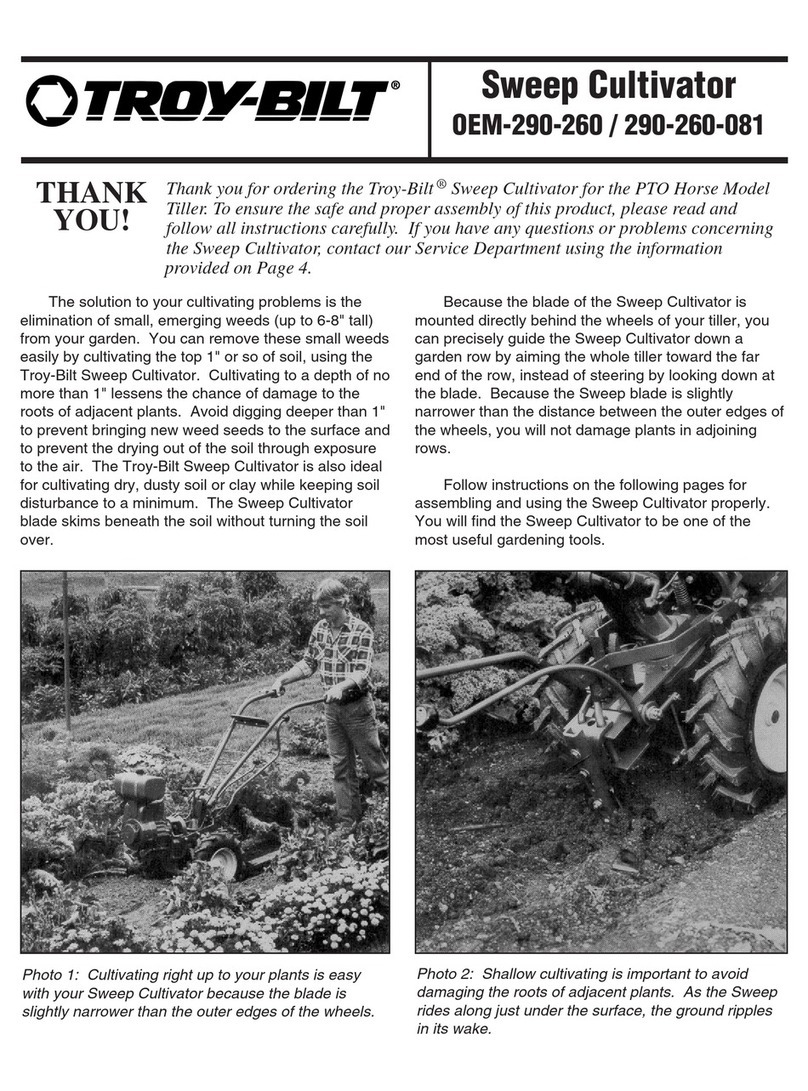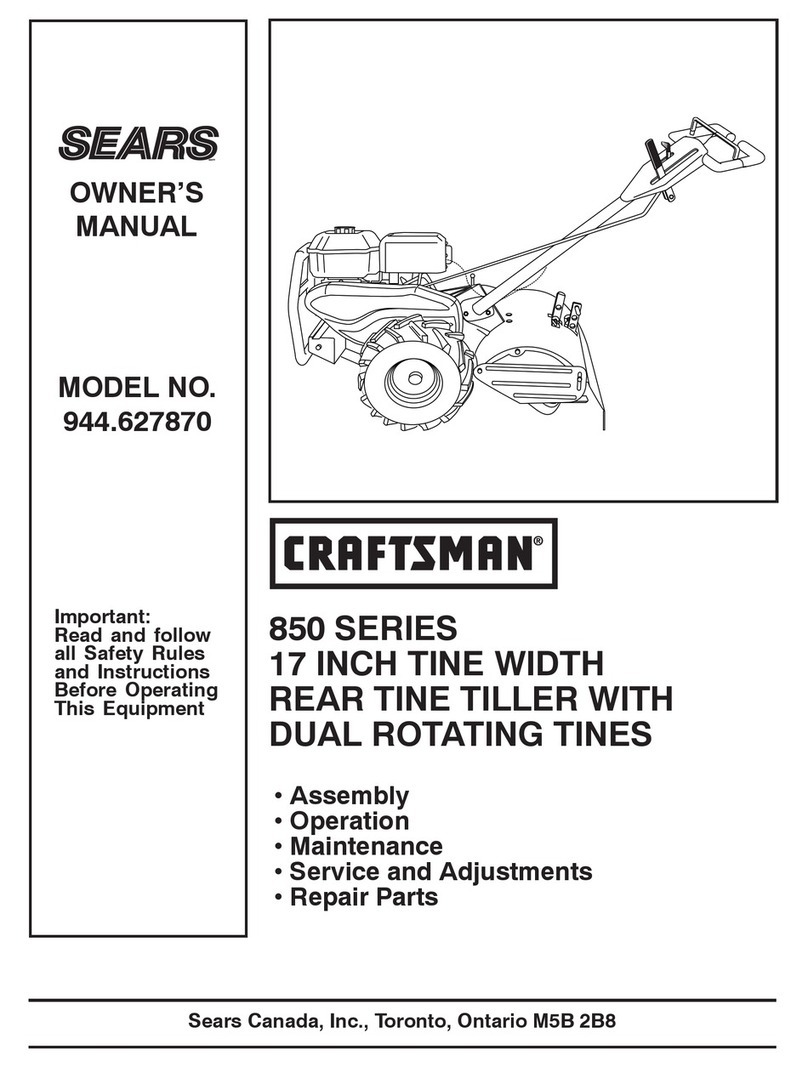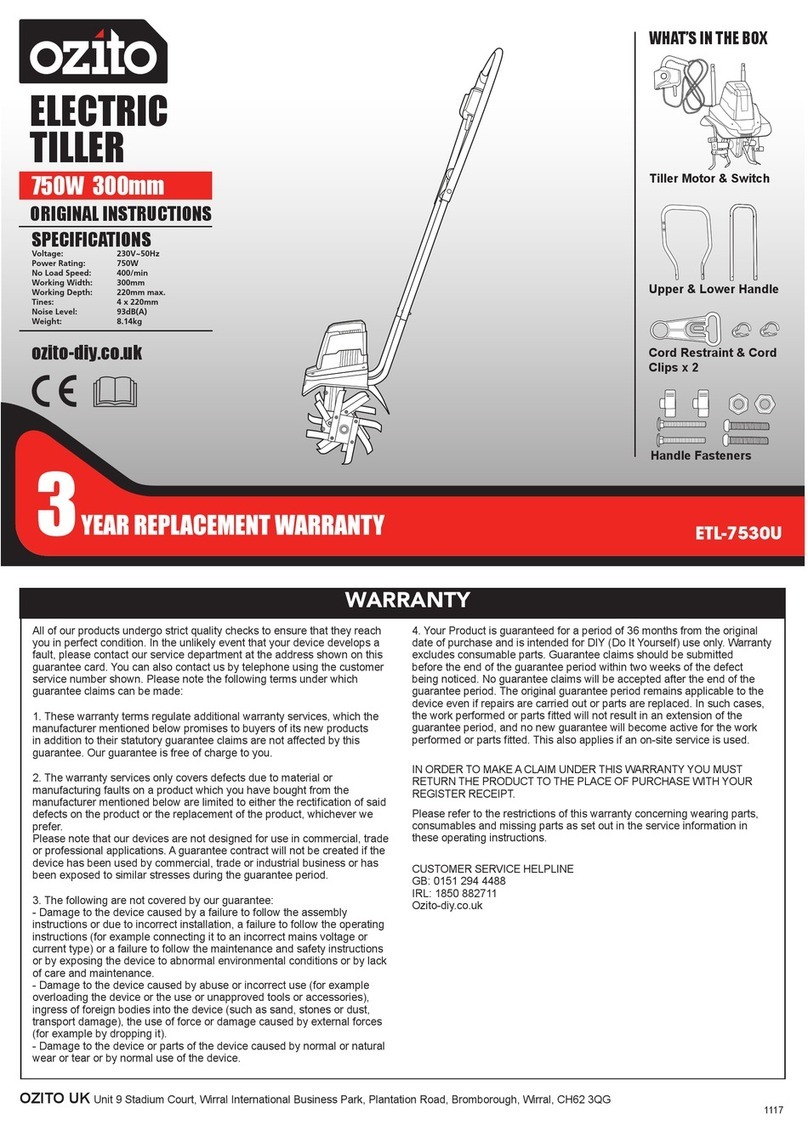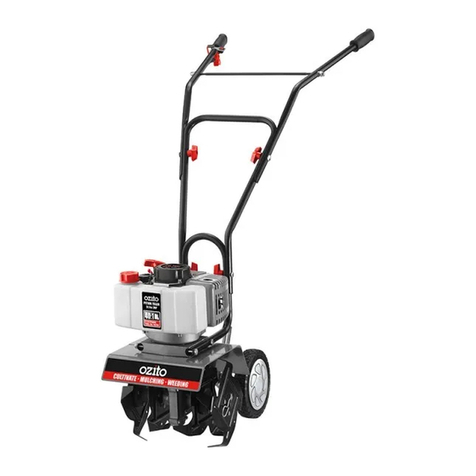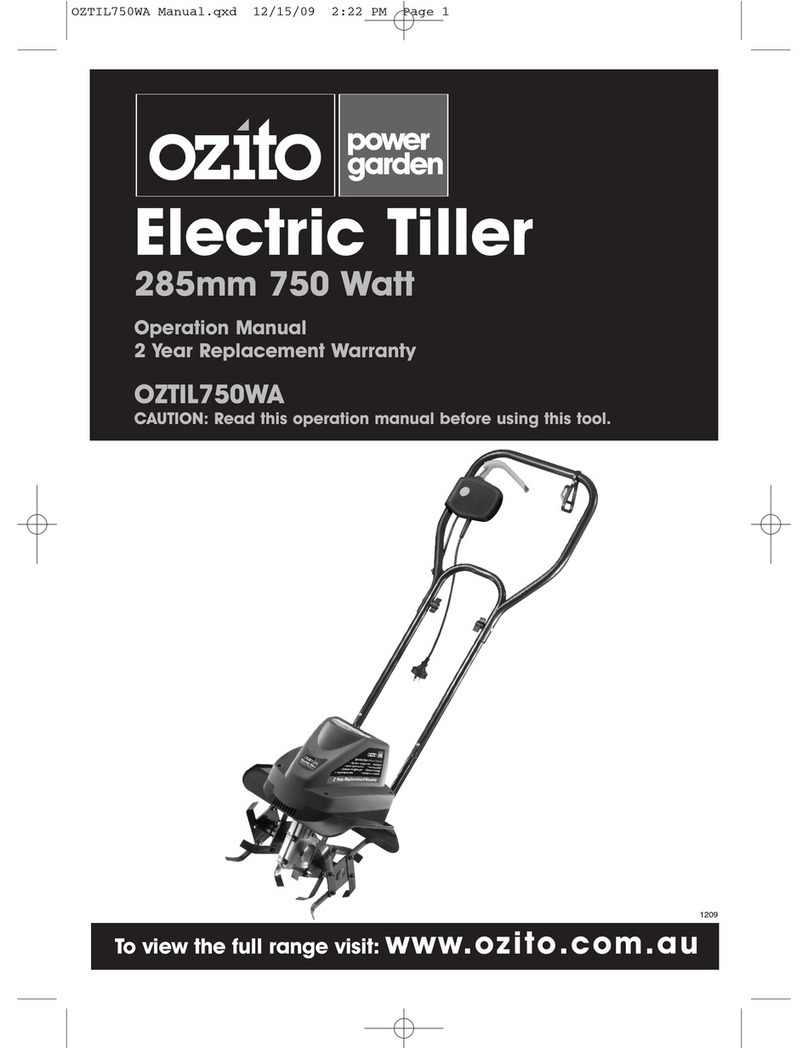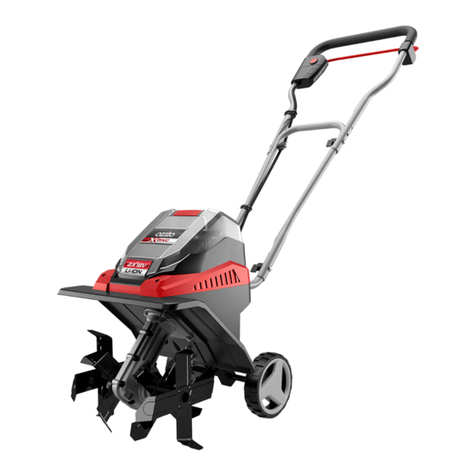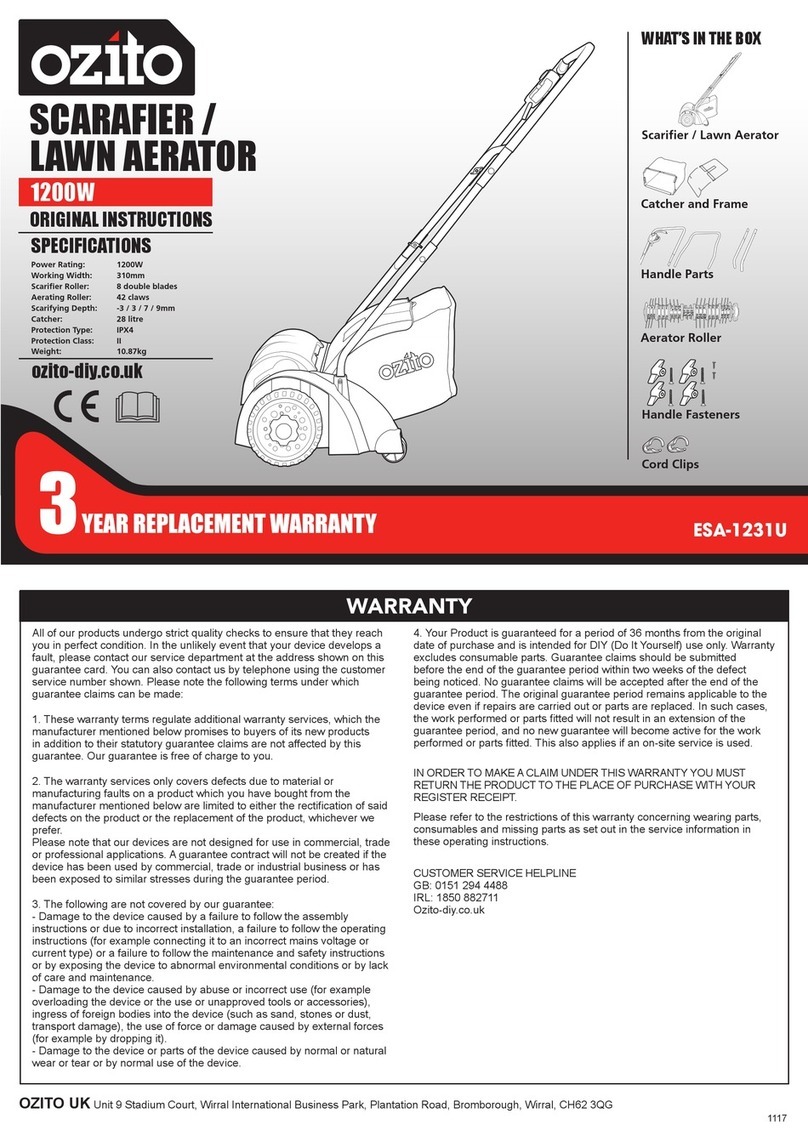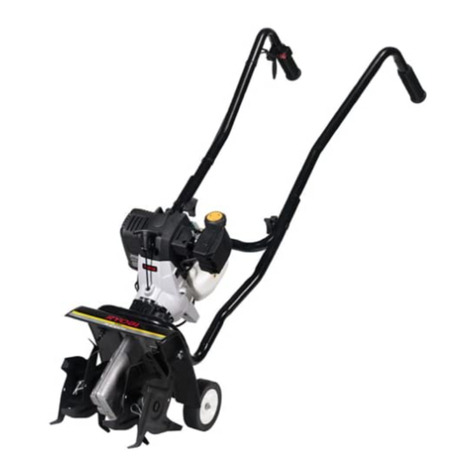
GB
- 7 -
balance at all times. This will enable you to
control the power tool better in unexpected
situations.
f) Wear suitable clothes. Never wear loo-
se fitting clothes or jewelry. Keep hair,
clothing and gloves away from moving parts.
Loose clothing, jewelry or long hair can be
caught by moving parts.
g) If dust extraction devices and dust coll-
ection devices can be fitted, they must be
connected and must be used correctly.
The use of a dust extractor can reduce the
dangers posed by dust.
h) Do not allow yourself to be lulled into a
false sense of security and do not ignore
the safety regulations covering electric
power tools, even if you are familiar with
the power tool after having used it many
times. Carelessness can lead to serious inju-
ries in just a fraction of a second.
4. Using and handling the power tool
a) Do not overload your power tool. Use the
correct electric tool for the job in hand.
The correct tool will enable you to work better
and more safely within the specific perfor-
mance range.
b) Do not use an electric power tool if the
switch is defective. An electric power tool
that cannot be switched on or offis dange-
rous and must be repaired.
c) Pull the plug out of the socket and/or
remove the battery pack before making
any adjustments to the tool, changing ac-
cessories or putting the power tool down.
These precautions will prevent the power tool
starting accidentally.
d) Keep unused electric tools out of the
reach of children. Do not allow people
who are not familiar with the power tool
or who have not read these instructions
to use the tool. Electric tools are dangerous
if they are used by inexperienced people.
e) Look after power tools plug-in tools with
care. Check that moving parts function
correctly and do not jam, and whether
any parts are broken or damaged such
that they adversely affect the function
of the power tool. Have damaged parts
repaired before you use the power tool.
Many accidents are caused by poorly
maintained electric tools.
f) Keep cutting tools sharp and clean. Ca-
refully maintained cutting tools with sharp
cutting edges will jam less and are easier to
control.
g) Use the power tool, accessories, plug-in
tools, etc. as set out in these instructions.
Take account of the conditions in your
work area and the job in hand. Using elec-
tric tools for purposes other than the one for
which they are designed can result in dange-
rous situations.
h) Keep the handles and grip surfaces dry,
clean and free from oil and grease. If the
handles and grip surfaces are slippery, it will
not be possible to operate and control the
power tool safely in unforeseen situations.
5. Using and handling the cordless tool
a) Only charge the batteries in chargers that
are recommended by the manufacturer.
A charger that is designed for a certain type
of battery may pose a fire risk if it is used with
other types of battery.
b) Use only the correct batteries in the elec-
tric tools. The use of other batteries may
result in injuries and a fire risk.
c) Keep unused batteries away from paper
clips, coins, keys, nails, screws and other
metallic objects that could cause a short
circuit between the contacts. A short cir-
cuit between the battery contacts may cause
burns or a fire.
d) In case of incorrect use, fluid may escape
from the battery. Avoid contact with it. If
you touch it by accident, rinse the affec-
ted area with water. If you get the fluid
in your eyes, also seek medical advice.
Leaking battery fluid can cause skin irritation
or burns.
e) Never use damaged or altered rechargea-
ble batteries. Damaged or altered recharge-
able batteries can behave unpredictably and
lead to a risk of fire, explosion or injury.
f) Never expose a rechargeable battery to
fire or high temperatures. Fire or tempera-
tures over 130°C pose a risk of explosion.
g) Follow all the instructions on charging
and never charge the rechargeable batte-
ry or cordless tool outside the specified
allowable charging temperature range.
Incorrect charging or charging outside the
allowable charging temperature range could
cause irreparable damage to the battery and
increase the risk of fire.
Anl_PXCTS_0182U_SPK7.indb 7Anl_PXCTS_0182U_SPK7.indb 7 28.08.2019 08:59:5728.08.2019 08:59:57



